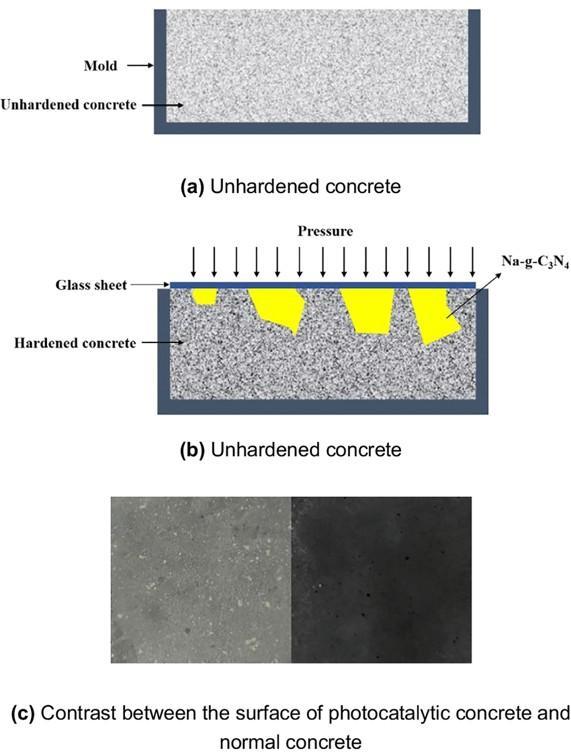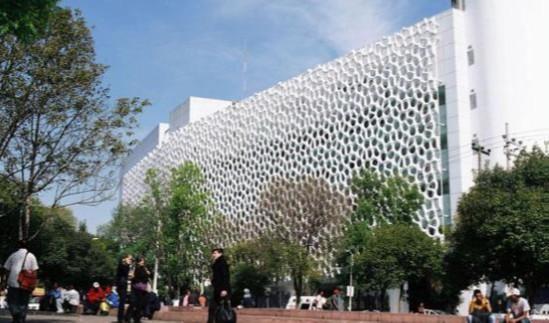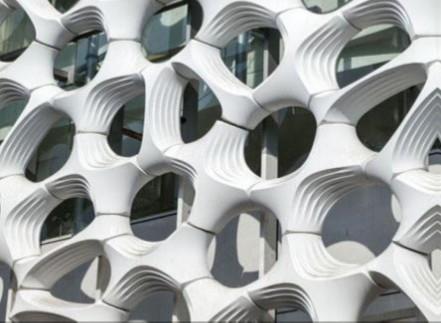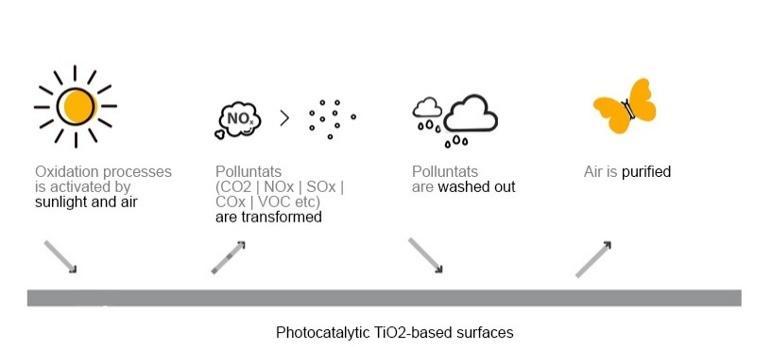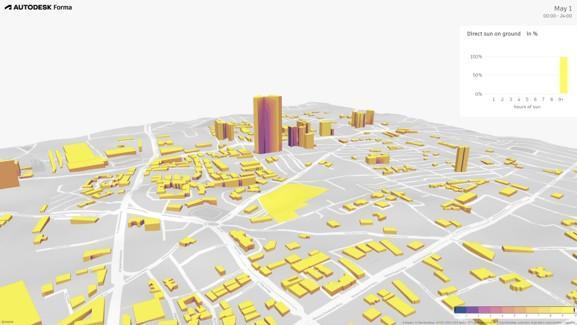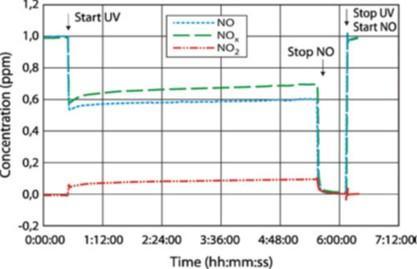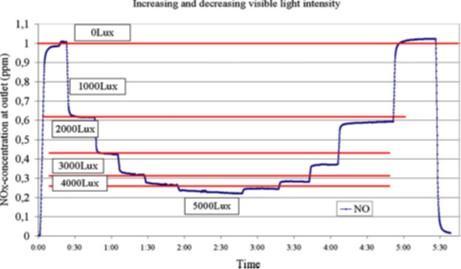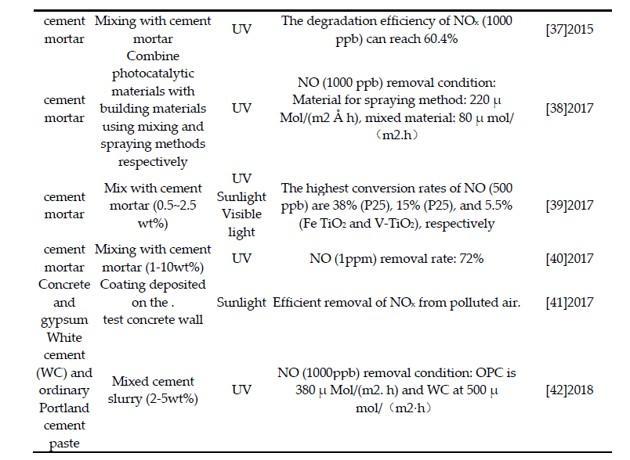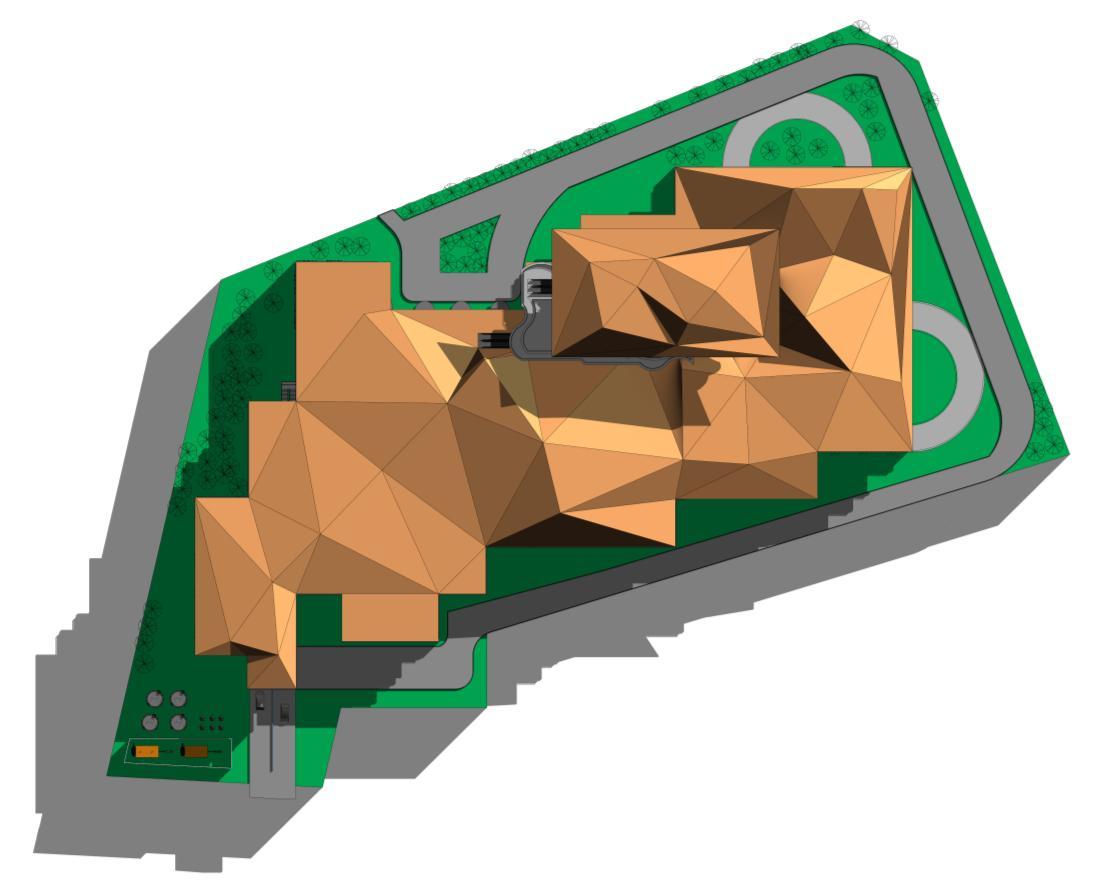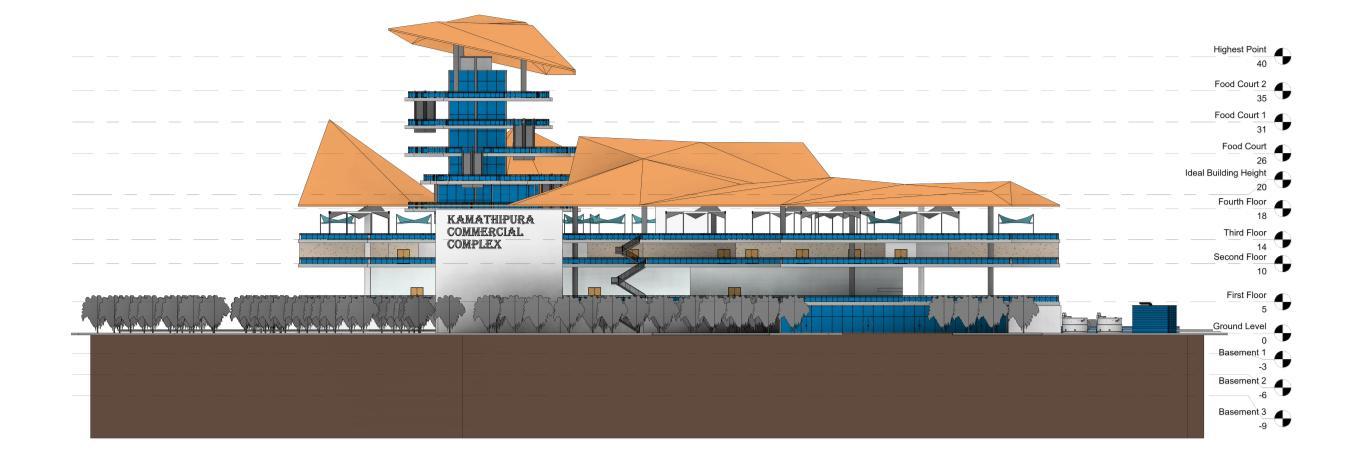CERTIFICATE
MAHATMA GANDHI UNIVERSITY, KERALA
This is to certify that the special topic study report titled "Air, Clean Cities: Photocatalytic Materials for Urban Air Pollution Mitigation” submitted by LITHIN KARIKKOTTU NINAN to the Mahatma Gandhi University, Kerala in partial fulfilment of the requirements for the award of the Degree of Bachelor of Architecture (B.Arch) is a bonafide record of the project work carried out by him under our guidance and supervision, submitted as Semester X elective workshop 4 subject during the term March 2024 – September 2024. This report in any form has not been submitted to any other University or Institute for any purpose.
THESIS GUIDE
Ar. Dhanush Vayalambron
Assistant Professor
ASADI
THE PRINCIPAL
Dr. Babu Rajeshwaran
Professor
ASADI
EXAMINER 1
EXAMINER 2
DECLARATION
I undersigned hereby declare that the special topic study report “Clean Air, Clean Cities: Photocatalytic Materials for Urban Air Pollution Mitigation”, submitted for partial fulfilment of the requirements for the award of degree of Bachelor of Architecture of Mahatma Gandhi University, Kerala is a bonafide work done by me under the guidance of Ar. Dhanush Vayalambron. This submission represents my ideas in my own words and where ideas or words of others have been included, I have adequately and accurately cited and referenced the original sources. I also declare that I have adhered to ethics of academic honesty and integrity and have not misrepresented or fabricated any data or idea or fact or source in my submission. I understand that any violation of the above will be a cause for disciplinary action by the institute and/or the University and can also evoke penal action from the sources which have thus not been properly cited or from whom proper permission has not been obtained. This report has not been previously formed the basis for the award of any degree, diploma or similar title of any other University.
Lithin Karikkottu Ninan 193241910222
Place: Vyttila, Kochi Date: 24-09-2024
ACKNOWLEDGEMENT
I would like to express my sincere gratitude to all those who have contributed to the successful completion of my special topic study report.
First and foremost, I would like to thank my parents, whose unwavering support and encouragement have been invaluable throughout this journey. Their belief in my abilities has motivated me to strive for excellence.
I am deeply grateful to my faculty members, who have provided me with invaluable guidance and mentorship. I would like to extend a special thanks to my thesis guide, Ar. Dhanush Vayalambron, whose expertise and dedication have been instrumental in shaping this specialized study report.
I would also like to thank Prof. Ar. B. R. Ajit, the Chairman, Dr. Babu Rajeshwaran, the Principal, and Dr. Prateek Sudhakaran, the Director, ASADI 2030, for their support and guidance throughout my academic career.
A special thanks goes to Ar. Sriparvathy Unni, Thesis Coordinator for her invaluable insights and contributions to this study report.
Finally, I would like to thank my friends and classmates for their constant support, encouragement, and camaraderie. Their friendship has made this journey a memorable one.
Thank you all for your invaluable contributions to this special topic study report
ABSTRACT
This special topic study report explores the integration of photocatalytic materials into roofing systems as a sustainable solution for urban air pollution mitigation. By utilizing sunlight to decompose pollutants and self-clean surfaces, photocatalytic roofing significantly enhances air quality, reduces energy consumption, and improves building aesthetics. Although initial costs may exceed those of traditional materials, long-term benefits such as lower maintenance expenses and energy savings can justify the investment. Advances in photocatalytic technology are yielding more efficient and cost-effective options. The project highlights the potential impact of photocatalytic roofing on the sustainability and performance of commercial buildings, encouraging architects and owners to contribute to healthier urban environments. Future research directions include enhancing material efficiency, integrating with other building systems, and studying large-scale implementations to fully realize the benefits of photocatalytic roofing in urban settings.





















LIST OF FIGURES
INTRODUCTION TO THE TOPIC
The undergraduate architectural thesis on the commercialization of space in Kamathipura presents a unique opportunity to explore innovative and sustainable construction practices. Photocatalytic materials offer a promising solution for improving air quality and self-cleaning properties, making them a valuable addition to my design considerations. Photocatalytic materials are semiconductors that activate when exposed to light, particularly ultraviolet (UV) light. This activation triggers a series of chemical reactions that can degrade pollutants, organic matter, and even some bacteria and viruses adhering to the surface. In construction, photocatalytic materials are typically integrated into building materials like concrete, tiles, paints, or coatings.
Source: ResearchGate
AIM
This special topic study report aims to explore the innovative application of photocatalytic materials in the design of a redefined commercial space in Kamathipura, Mumbai. Photocatalysis is a light-activated process that harnesses the power of sunlight to decompose pollutants and selfclean surfaces.
OBJECTIVES
The use of photocatalytic materials directly supports the core principles of the thesis project: Community Health and Wellbeing: Improved air quality within and around the commercial space fosters a healthier environment for visitors, workers, and residents in the surrounding area.
Figure 1: Photocatalytic Concrete
Sustainable Practices: Photocatalysis promotes a more sustainable approach to building design and maintenance, aligning with the project's focus on environmental responsibility.
Creating a Vibrant Public Realm: Cleaner parametric roofing and a reduction in economic and maintenance activities can contribute to a more visually appealing and inviting public space.
Source: Science Direct
Source: Springerlink
Figure 2: Photocatalytic Process
Figure 3: Concrete Differentiation
Source: Wikipedia
Source: ResearchGate
SCOPE OF THE STUY
Facade Panels: Consider incorporating photocatalytic concrete panels or tiles into the building facade, particularly for surfaces exposed to sunlight. This can improve air quality around the center and contribute to a self-cleaning exterior.
Public Plaza Paving: Utilizing photocatalytic paving materials for walkways and plazas can help purify the air within the public realm and reduce maintenance needs.
Interior Applications (Selective): While primarily beneficial outdoors, photocatalytic materials can be considered for specific interior applications like high-traffic areas, restrooms, or even self-cleaning ceilings in atriums. However, ensure adequate ventilation to remove any by-products generated during the photocatalytic process.
Figure 4: Titanium Dioxide Powdered Form
Figure 5: Reaction of Photocatalytic Material upon Sunlight Incidence
BACKGROUND STUDY
For centuries, architects have meticulously designed building envelopes, or facades, to shape the visual identity of our cities. However, the relentless assault of environmental grime has traditionally challenged the ability to maintain these exteriors in their pristine state. Conventional cleaning methods, while effective in the short term, are often costly, labor-intensive, and require frequent repetition. Additionally, these methods often rely on harsh chemicals that can damage building materials and contribute further to environmental pollution.
A revolutionary technology is emerging that promises to transform the way we approach building facades – self-cleaning materials. These intelligent exteriors harness the power of photocatalysis, a process activated by sunlight, to revolutionize urban hygiene and air quality.
The Science behind Self-Cleaning Facades
The magic lies in a naturally occurring compound called titanium dioxide (TiO2). When incorporated into a facade's material or applied as a thin coating, TiO2 becomes a potent catalyst when exposed to sunlight. This triggers a series of chemical reactions that break down dirt, organic matter, and even pollutants like nitrogen oxides clinging to the building's surface. Rainwater then acts as a natural rinse, effortlessly washing away the decomposed materials, leaving the facade clean and fresh (1)
Figure 6: Photocatalytic Facade
Source: Tunnel Umberto
Beyond Aesthetics: A Multifaceted Approach to Urban Wellbeing
The benefits of self-cleaning facades extend far beyond maintaining a building's visual appeal. Here's a deeper look at the multifaceted advantages this technology offers:
Reduced Maintenance Costs: By minimizing the need for frequent cleaning, self-cleaning facades translate to significant cost savings on labor and specialized equipment. This translates to lower operational costs for building owners and managers.
Enhanced Air Quality: The photocatalytic process actively contributes to improved air quality in urban areas. As pollutants like nitrogen oxides are broken down by the facades, the overall levels of these harmful substances in the surrounding environment are reduced. This translates to cleaner air for residents, improved public health, and a more sustainable urban environment.
Design Versatility: Architects are not limited by a single material choice when it comes to self-cleaning facades. Here's a glimpse into the available options:
Self-Cleaning Glass: A thin layer of TiO2 applied to the glass surface activates the photocatalytic process. Dirt and debris are broken down, and rain washes them away, maintaining a clear, unblemished facade.
Self-Cleaning Ceramic and Stone Tiles: These tiles seamlessly integrate TiO2, offering not just self-cleaning properties but also air-purifying capabilities. They come in a wide range of shapes, colors, and finishes, allowing for a high degree of design flexibility.
Photocatalytic Concrete: Concrete mixed with TiO2 becomes an active participant in urban air purification. This sustainable option not only keeps the façade clean but also decomposes pollutants, making it ideal for a variety of architectural structures.
Source: Tunnel Umberto
Figure 7: Self-Cleaning Facade Blow-up
ResearchGate
Source: ResearchGate
Figure 8: Titanium Dioxide Reaction
Source: Britannica
Figure 9: Disinfection Mechanism
Source:
Figure 10: Schematic Illustration
DATA COLLECTION OF STANDARDS AND TECHNICAL DETAILS/THEORIES
Figure 11: Daylight in Site
Source: Autodesk Forma
Figure 12: Annual Temperature Chart
Source: India Geographical Survey
Source: Climate Data
Source: Climate Data
Source: Weather & Climate
Figure 13: Relative Humidity
Figure 14: Concentration Levels of UV
Figure 15: Visible Light Intensity
Figure 16: Research Literature of various construction implementation 1
Source: ResearchGate
Figure 17: Research Literature of various construction implementation 2
Source: ResearchGate
Figure 18: Application of Titanium Dioxide in Examples
Source: ResearchGate
ADVANTAGES & DISADVANTAGES
Advantages
Photocatalytic materials can significantly improve air quality by decomposing harmful pollutants like nitrogen oxides (NOx). This can contribute to a healthier environment, especially in urban areas with high levels of air pollution (2)
Self-cleaning properties: Photocatalytic surfaces can maintain a cleaner appearance for longer periods, reducing the need for frequent cleaning and the use of harsh chemicals.
Energy efficiency: Photocatalytic materials can help reduce reliance on artificial lighting by utilizing natural sunlight for their activation. This can lead to energy savings and lower operating costs.
Versatility: Photocatalytic materials can be incorporated into various surfaces, including building facades, flooring, and roofing materials, offering flexibility in design and application.
Durability: Many photocatalytic materials are durable and can maintain their effectiveness over time, making them a long-term investment.
Disadvantages:
Sunlight dependency: Photocatalytic materials require sunlight or artificial UV light for activation. Their effectiveness can be limited in areas with low sunlight exposure or during nighttime.
Initial cost: The initial cost of incorporating photocatalytic materials into construction projects may be higher compared to traditional materials. However, the long-term benefits in terms of reduced maintenance and energy savings can offset these costs.
Potential for degradation: Over time, photocatalytic materials can become less effective due to factors such as dust accumulation, weathering, or damage. Regular maintenance and cleaning may be necessary to maintain their performance.
Limited research on long-term effects: While photocatalytic materials are generally considered safe, more research is needed to fully understand their long-term environmental and health impacts.
Overall, photocatalytic materials offer significant advantages in terms of environmental benefits, self-cleaning properties, and energy efficiency. However, their effectiveness can be influenced by factors such as sunlight exposure and maintenance requirements. Careful consideration of these factors is essential when integrating photocatalytic materials into architectural projects.
Source: ResearchGate
Figure 19: Effects of Surface Treatment on Concrete
PRELIMINARY STUDY
Across the globe, architects are embracing self-cleaning facades, pioneering a new era in sustainable and functional urban design. Let's explore some inspiring examples:
Infoscore Office Building, Germany: Located in a polluted area, this building utilizes selfcleaning glass to significantly reduce cleaning needs and maintain a sleek appearance.
Brive-la-Gaillarde Hospital, France: This hospital renovation project incorporated selfcleaning glass facades, prioritizing improved air quality and patient comfort.
Sapphire Residential Project, Germany: This project showcases the design possibilities of selfcleaning ceramic tiles, contributing not just to aesthetics but also to cleaner air.
Vanke Pavilion, China: Drawing inspiration from a dragon's scales, the pavilion utilizes selfcleaning ceramic panels, embodying a sustainable and visually striking design.
570 Broome Tower, USA: This luxury tower utilizes self-cleaning panels on its facade, combating air pollution in a heavily trafficked area of New York City.
Torre de Especialidades Hospital, Mexico City: This hospital prioritizes the health of its patients by employing a self-cleaning tile facade that actively combats air pollution in the heavily polluted Mexico City environment.
Palazzo Italia, Italy: This large-scale project demonstrates the potential of photocatalytic concrete. The building's facade uses this innovative material for both self-cleaning and depolluting purposes, contributing to a cleaner urban environment.
Jubilee Church, Italy: This iconic church features white sails made from photocatalytic concrete, showcasing the aesthetic potential of this technology while actively contributing to cleaner air.
The Future of Self-Cleaning Facades & Roofing: A Brighter, Cleaner Horizon
As research and development continue, self-cleaning facades and roofing are poised to become even more efficient and cost-effective. With increased awareness of the environmental and health benefits of this technology, architects and builders are likely to incorporate
.
LITERATURE CASE STUDY – WANKE PAVILION, CHINA
The Vanke Pavilion, a temporary structure gracing the 2015 Milan Expo, stands as a testament to both innovative design and sustainable practices. Designed by the renowned architect Daniel Libeskind, the pavilion embodies a powerful metaphor – a dynamic, serpentine dragon representing Chinese culture and its relationship with food (3)
Figure 20: Wanke Pavilion
Source: Ceramic Architecture
Figure 21: Aerial View
Source: Ceramic Architecture
ANALYSIS AND INFERENCES
The pavilion's striking form is a sight to behold. Crafted from over 4,200 red, metalized porcelain stoneware tiles, it shimmers and changes color depending on the light. The intricate 3D bas-relief geometric pattern on the tiles adds another layer of visual intrigue.
However, the design goes beyond aesthetics. The sinuous form and strategically placed stairwells create a sense of flow, guiding visitors through a journey that explores China's culinary landscape. The pavilion seamlessly integrates indoor and outdoor spaces, fostering a connection with the surrounding environment.
The pavilion's design also prioritizes natural lighting and ventilation. The open layout and strategically placed openings allow for ample daylight to penetrate the interior, reducing reliance on artificial lighting.
One of the most remarkable aspects of the Vanke Pavilion is its embrace of sustainable practices. The metallic glaze on the tiles incorporates oxides, imbuing them with photocatalytic properties. This means that sunlight activates the tiles, breaking down pollutants in the air and promoting selfcleaning – a significant advantage in an urban environment.
Source: Ceramic Architecture
Figure 22: Ground Floor Plan
Source: Ceramic Architecture
DETAILED DRAWINGS
24: Cross-Section of Panel Facade
Source: Ceramic Architecture
Figure 23: Section
Figure
Figure 25: Facade Anchorage
Source: Ceramic Architecture
Figure 26: Interior View
Source: Archdaily
Site Plan
Elevation
SECTION
AXONOMETRIC EXPLODED VIEW
3D VIEW
The integration of photocatalytic materials into roofing systems presents a promising avenue for sustainable urban development. By harnessing the power of sunlight to decompose pollutants and self-clean surfaces, photocatalytic roofing can contribute significantly to improved air quality, reduced energy consumption, and enhanced building aesthetics.
While the initial investment in photocatalytic roofing materials may be higher than traditional options, the long-term benefits in terms of reduced maintenance costs, energy savings, and environmental improvements can outweigh the upfront costs. Additionally, advancements in photocatalytic technology are leading to more efficient and cost-effective materials.
As this thesis project demonstrates, the application of photocatalytic roofing can have a significant impact on the sustainability and performance of commercial buildings. By incorporating photocatalytic materials into the design and construction of roofs, architects and building owners can contribute to a cleaner, healthier, and more sustainable urban environment
Further research and development are necessary to fully realize the potential of photocatalytic roofing. Areas for future exploration include:
Enhanced efficiency: Developing photocatalytic materials with improved pollutant degradation rates and increased durability
Integration with building systems: Exploring the potential for integrating photocatalytic roofing with other building systems, such as rainwater harvesting and solar energy generation.
Large-scale implementation: Conducting studies on the long-term performance and environmental impact of photocatalytic roofing in real-world applications
By addressing these areas, the future of photocatalytic roofing appears promising, offering a sustainable and innovative solution for urban development
1. Application of Photocatalytic Materials. Research Gate. US : s.n., 2022.
2. Science Academia. Issues with Large Scale Deployment of Titanium Dioxide. 2021.
3. Archdaily. Wanke Pavilion. [Online] 2015. https://www.archdaily.com/627994/vanke-pavilionmilan-expo-2015-daniel-libeskind.


















